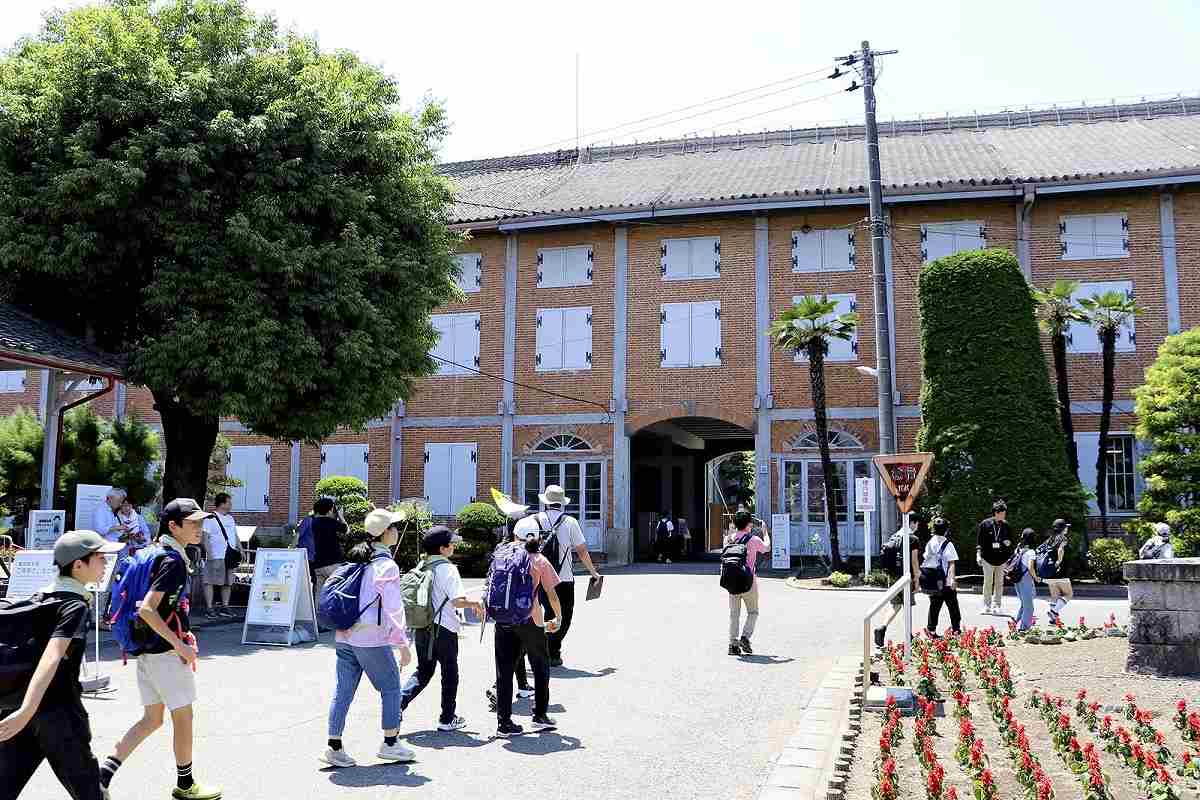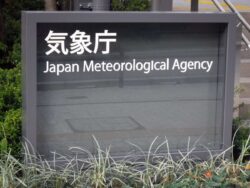Tomioka Silk Mill, World Cultural Heritage Site, Faces Repair Cost Problem Due to Decline in Visitors

People visit the Tomioka Silk Mill in Tomioka, Gunma Prefecture, with the East Cocoon Warehouse, designated national treasure, in front, which has yet to be repaired.
14:27 JST, September 14, 2024
MAEBASHI — Ten years after its registration on the UNESCO World Cultural Heritage list, the Tomioka Silk Mill in Tomioka, Gunma Prefecture, is suffering from a decline in visitors, leading to a drop in revenue from admissions. Due to a lack of funds, there is no prospect of repairing two of its three buildings, all of which are designated as national treasures.
This Western-style mill was Japan’s first full-scale silk mill and served as a symbol of Japan’s modernization. Some of the buildings that have existed since the facility’s opening in 1872 are growing more and more decrepit.
The Tomioka Silk Mill was built by the government to produce high-quality raw silk, which was an important export item at the time. The about 55,000-square-meter site contains more than 100 buildings of various sizes.
The mill, which closed in 1987, is now owned and managed by the Tomioka city government. It was registered on the World Cultural Heritage list in 2014, along with three other facilities in Gunma Prefecture.
“For a while after the mill was added to the World Heritage list, I was giving guided tours three times a day. Now I’m only active about three times a month, due to the drop in groups of visitors,” admitted a man who has served as a guide at the mill.
The number of visitors to the mill was 200,000 to 300,000 per year before its World Heritage registration. The number sharply increased to about 1.337 million in fiscal 2014, the year it was added to the list. After that, the number entered a continuous decline, dropping as low as 170,000 in fiscal 2020, when the COVID-19 pandemic began.
Although the number had recovered to the 360,000 level by fiscal 2023, this is not enough. The mill would need 500,000 visitors per year to collect enough admission fees to cover the roughly ¥100 million, which is necessary to pay for conservation and maintenance and to contract with a company to manage the facility.
The Tomioka city government has a fund for the mill’s continued preservation and maintenance, which is mainly supported by admission fees. Its balance decreased to about ¥50 million at the end of fiscal 2021 from ¥990 million at the end of fiscal 2016.
When the government was concerned about a 37.5-meter-high chimney collapsing, it raised ¥80 million needed for repairs through crowdfunding.
Implementation of repair plans is also behind schedule. Of the buildings designated as national treasures, only the West Cocoon Warehouse, where cocoons were stored, has been repaired and opened to the public. Work on the East Cocoon Warehouse and the Silk-Reeling Plant have still not begun.
Repairs to the West Cocoon Warehouse, including outfitting it with a multipurpose hall that can be used for concert, cost about ¥3.5 billion.
“From a budgetary standpoint, it would be difficult to perform similar repairs on the other two buildings,” a senior city official said. But some visitors say that they want to see the automatic silk reeling machinery in operation.
“We will develop measures to bring in a steady stream of visitors,” Tomioka Mayor Yoshinori Enomoto said, meaning that the city government will make efforts to attract educational travel, such as school trips and hands-on learning experiences, expecting the participants to return as repeat visitors in the future.
Keiichi Murata, a visiting professor at Maebashi Institute of Technology, who was involved in formulating the plan for using and maintaining the silk mill, said: “Some people want to have more detailed information, for example, about the engravings on bricks of the mill. The mill should emphasize its functions of a museum, such as holding lectures and seminars on a regular basis.”
"Society" POPULAR ARTICLE
-

M4.9 Earthquake Hits Tokyo, Neighboring Prefectures
-

Israeli Tourists Refused Accommodation at Hotel in Japan’s Nagano Pref., Prompting Protest by Israeli Embassy and Probe by Prefecture
-

M7.5 Earthquake Hits Northern Japan; Tsunami Waves Observed in Hokkaido, Aomori and Iwate Prefectures
-

Tsukiji Market Urges Tourists to Avoid Visiting in Year-End
-

High School in Kyoto Says Students Shoplifted during Recent School Trip to Bali, Indonesia
JN ACCESS RANKING
-

Tokyo Economic Security Forum to Hold Inaugural Meeting Amid Tense Global Environment
-

Keidanren Chairman Yoshinobu Tsutsui Visits Kashiwazaki-Kariwa Nuclear Power Plant; Inspects New Emergency Safety System
-

Imports of Rare Earths from China Facing Delays, May Be Caused by Deterioration of Japan-China Relations
-

University of Tokyo Professor Discusses Japanese Economic Security in Interview Ahead of Forum
-

Japan Pulls out of Vietnam Nuclear Project, Complicating Hanoi’s Power Plans























